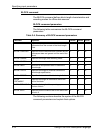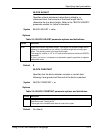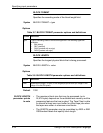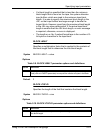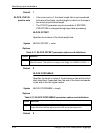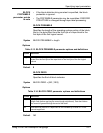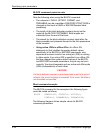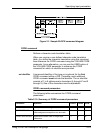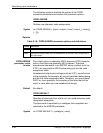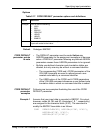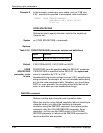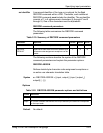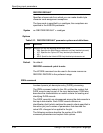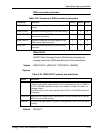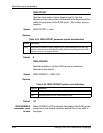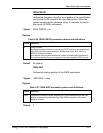
Specifying input parameters
2-20 Using LCDS Print Description Language
The following sections describe the syntax of the CODE
command parameters and explain the parameter options.
CODE ASSIGN
Defines user character code assignments.
Syntax ac: CODE ASSIGN = {(input, output) | (input, (output
1
[, output
2
]
[,...]))}
Options
CODE ASSIGN
parameter: point
to note
The output option is inherently ASCII, because LCDS character
sets in most fonts are generally ASCII ordered. Therefore,
hexadecimal characters in an EBCDIC string constant (such as
E’!3F’) are converted to ASCII before being put into the code
assignment table.
Hexadecimal output option strings (such as X’20’), as well as text
string constants (for example, a), are not translated before being
put into the code assignment table. Therefore, you should keep
ASCII or, more precisely, the encoding of the fonts that will be
used, in mind when you use hexadecimal strings.
Default No default
CODE DEFAULT
Specifies a base code from which you can make character code
assignment exceptions.
The base code is specified by a codetype; the exceptions are
specified in the ASSIGN parameter.
Syntax ac: CODE DEFAULT = {codetype | value}
Table 2-16. CODE ASSIGN parameter options and definitions
Option Definition
input Defines the input code.
output Defines the output code, such as hexadecimal or decimal, that corresponds to
the input code



